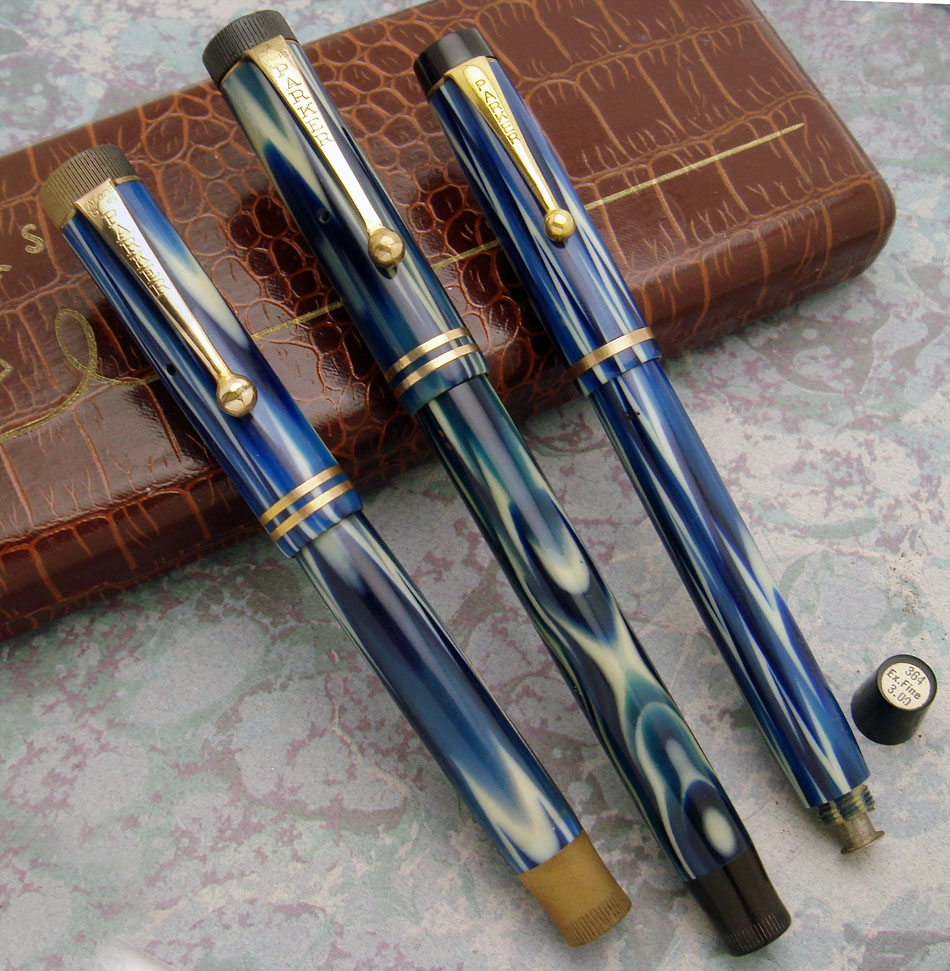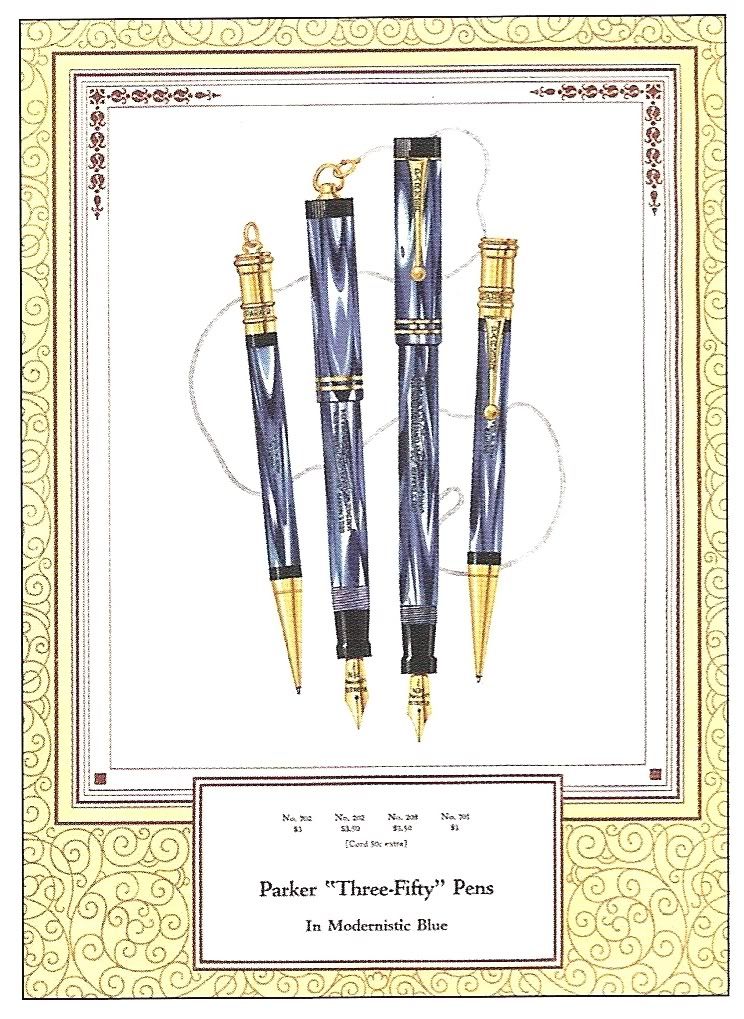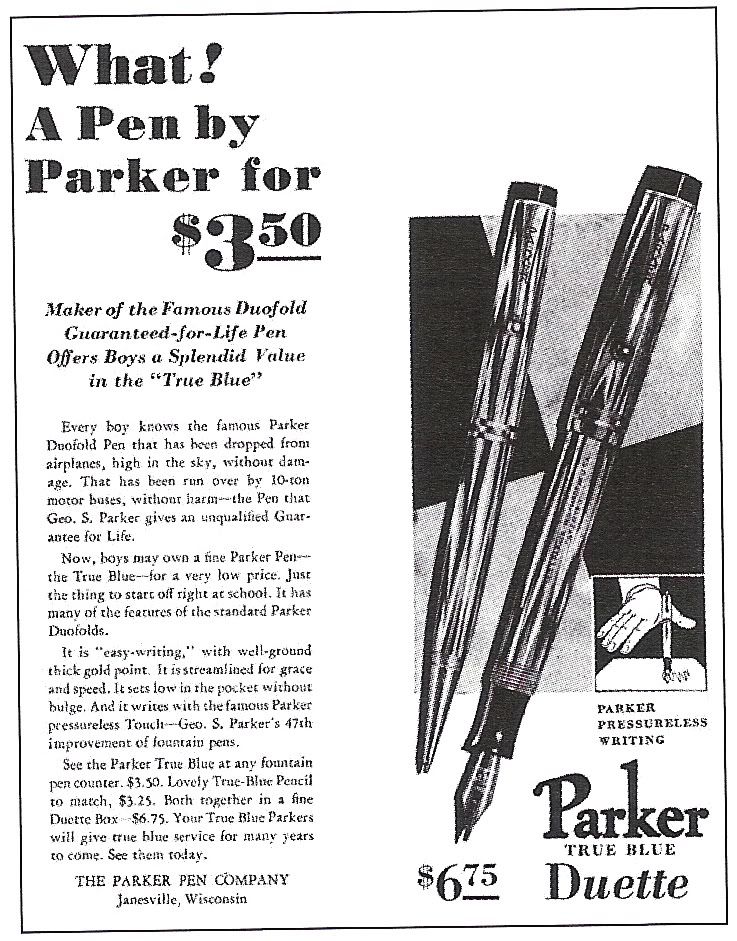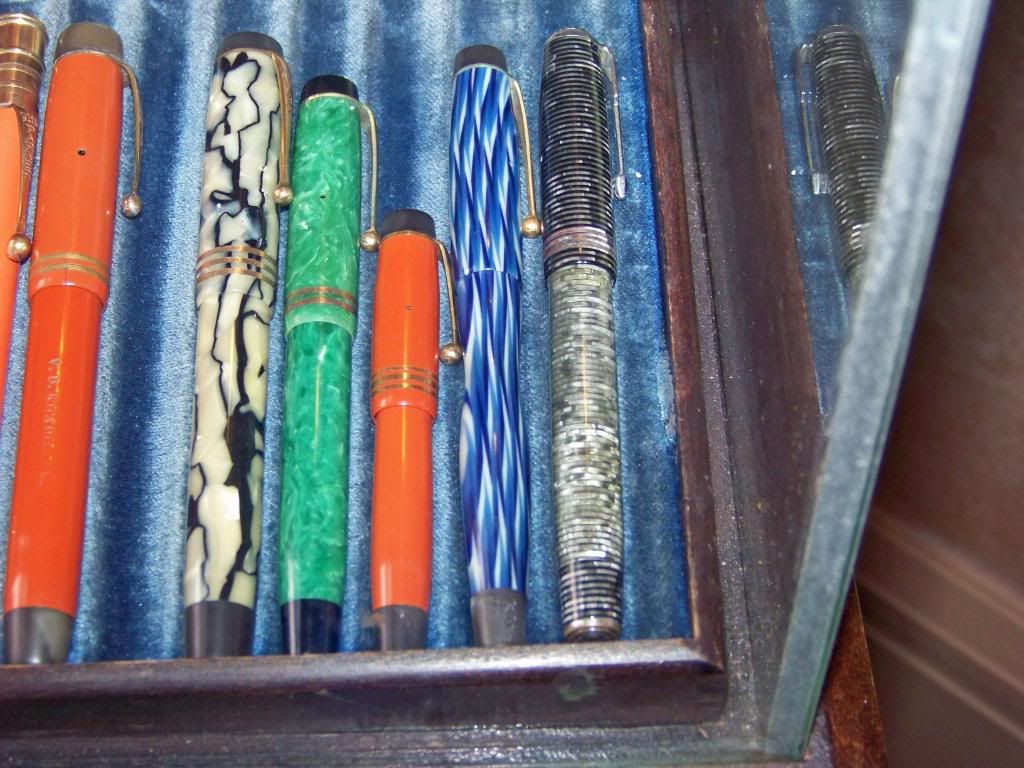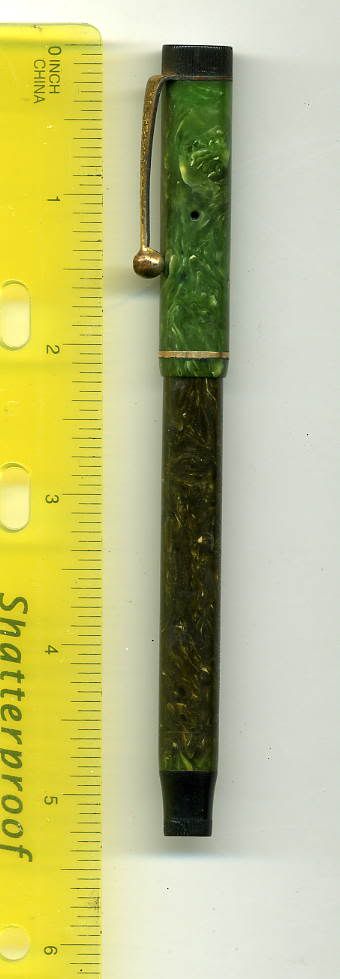I'm going to broaden this thread just a bit, noting the material below no doubt is fodder for an independent thread.
By now we've several times addressed the notion that collectors describe a wide range of Parker pens during the streamlined (1929+) era as "Parker Thrift Time" pens (or variants on that phrase), pens that generally were decent quality, button-fil, second-tier items, ones carrying merely bland "Parker" imprints without model names. The "Thrift" label comes from the appearance of just one of the several pen styles for which we use the "Thrift" name, in an advertisement in 1931 which alluded to the Great Depression, mentioning "Thrift TIme" but which did not call the pen a "Thrift" pen. Probably in an information vacuum, in which collectors in the early days of collectable pendom had fewer bits of Parker literature than we have today, lumping all pen styles from that period in with the single pen shown in the ad and assigning the "Thrift" label... had a certain... convenience.
But, realize that an intended "Parker Thrift Pen" does not exist. As more information has come to light, some of the several "Thrift" pens have gained model names, sometimes just names derived from their price, such as "Parker's $3.50 Pen". Most of these pens-- even now with model names-- still tend to fall into (or at least overlap) the Thrift Pen category.
The earliest style pen that is part of this collector created Thrift Pen category are pens that resemble the streamlined True Blue.
Pens are catalogued in True Blue's color, and since the 1928-9 catalogues perhaps have been with the hobby a long time, most collectors today do not label the True Blue a Thrift Pen. It meets all criteria, save that today we have a model name for it. The matching style jet black pen-- which most collectors consider a Thrift pen and which arguably can be called The Raven-- also is shown in catalogues, with price varying with trim level, described in catalogue as "our raven black and gold pen", but not clearly assigned a model name.
Things get interesting regarding
other color streamlined flat-top (there also are some
similar streamlined rounded-top) pens. Some are a bit longer than True Blue. Some have double cap-bands (as True Blue did during the prior year's non-streamlined flat-top version). No one has offered catalogue pages or advert for the two types of black/bronze, the gray/red, the Jade that looks quite like Duofold's Jade. These pens-- which appeared perhaps 2 years before that infamous "Thrift Time" Parker ad-- are classic "Thrift Time" Parkers.
Were these all part of the True Blue/Raven family, targeting a same general niche? DId color evolved during a brief couple year (or shorter) run, as we strongly suspect was the case for the 1932-1932 "Thrift" Moderne and Premier pens? Were the relatively scarce non-black non-True-Blue pens made for niche markets though? We don't know.
Some of these did appear with a more rounded black top piece, as did the classic "Thrift Pen" creme-bronze example that is shown in the 1931 "Thrift" ad. Were they just later variants on a theme, or did they serve a different niche Again... don't know.
I am pleased to offer what is probably the most comprehensive image of the earliest style Parker "Thrift" pen, those with streamlined flat-top look, noting that I am including True Blue and the (raven) Black pen, as really they seem to serve same niche. The creme-bronze is same color as the round-top pen from the 1931 Advert, and frankly I don't know if ring-top apparatus required a flat-ish top. it is possible this pencil should belong with the slightly later 1931-style round-top pens. Still..
The Jade is near mint with "perfect" color. I've seen fewer than 10 Jade pens of this sort. This is the best.
Comments and your images are invited.
First, with my usual diffuse lighting.
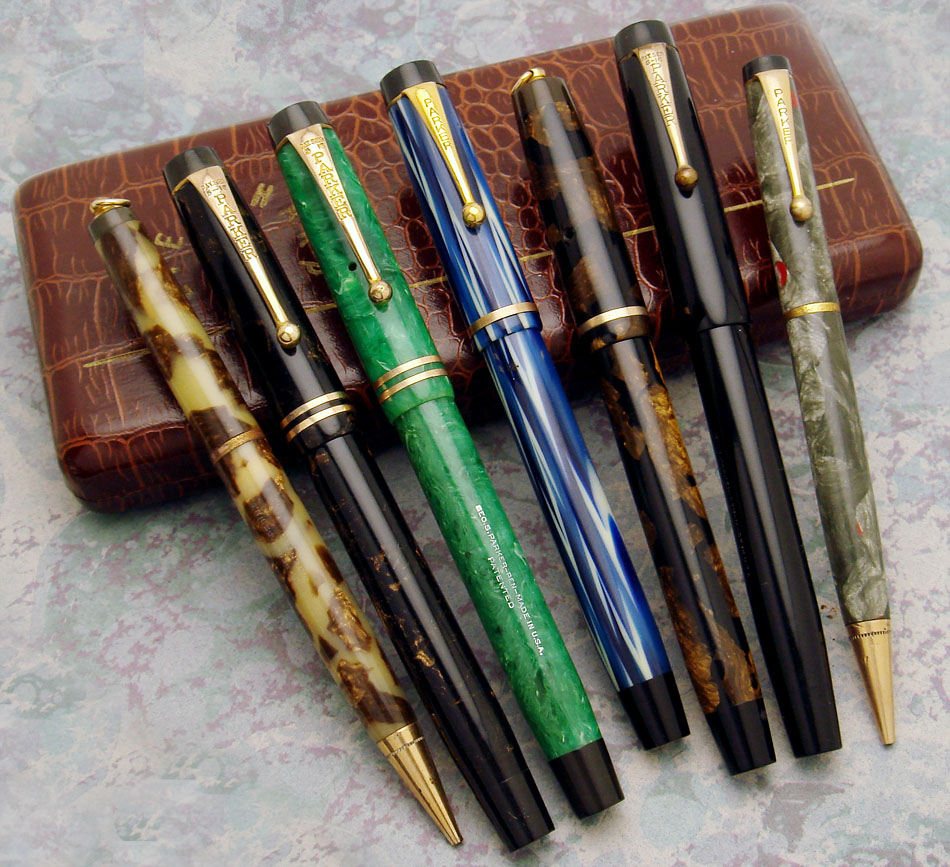
Next, with flash, giving some harsh reflections but showing better some of the pearlescence and metallescence (sic?).
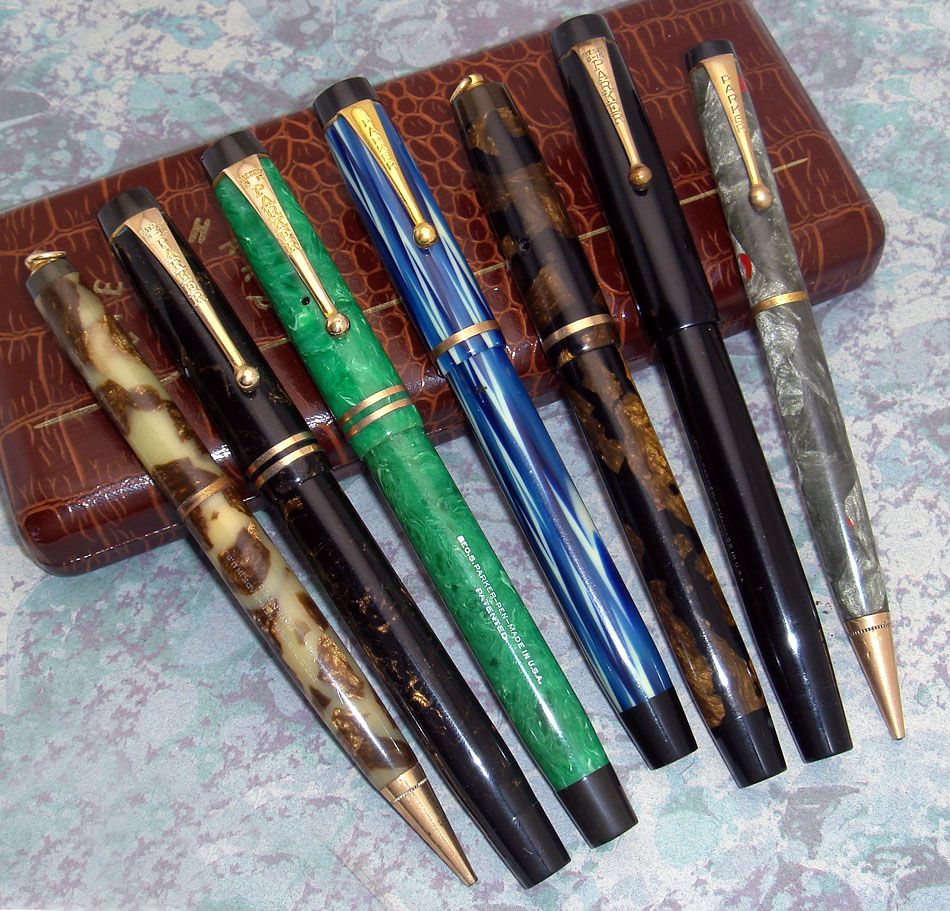
regards
david
